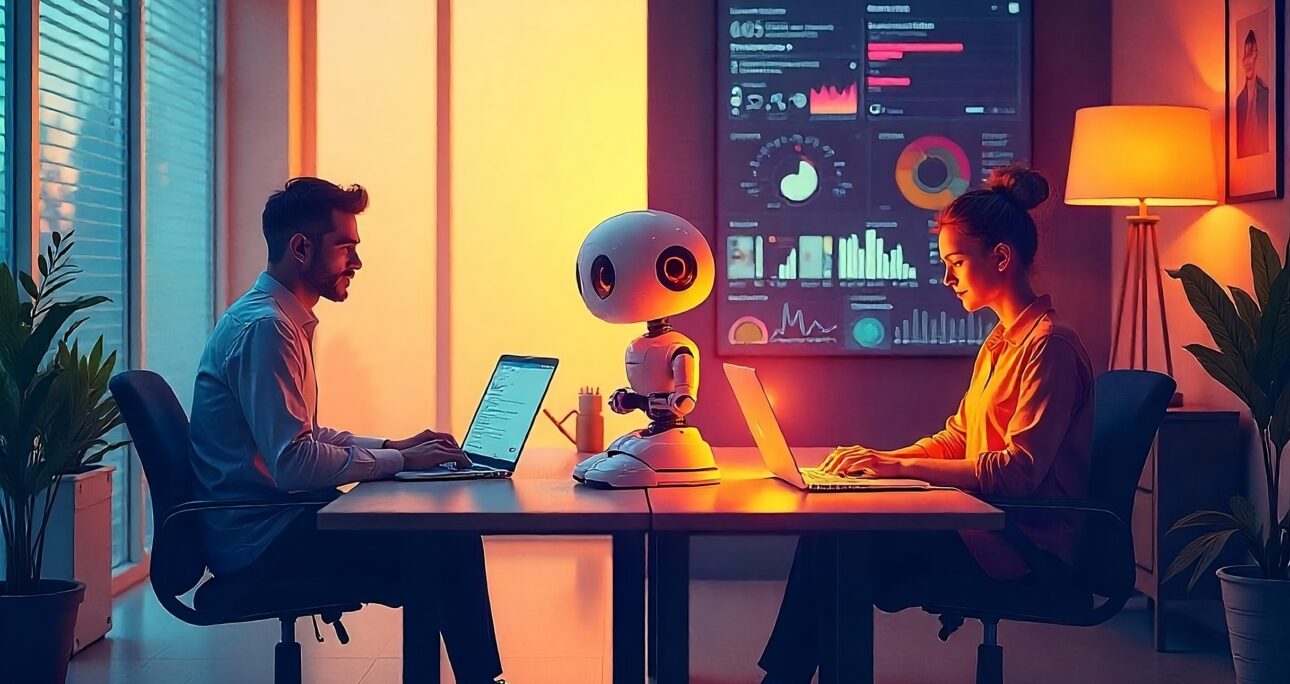Let’s be real—AI has flipped the career game on its head.
What used to be a clear path (get a job → work your way up → retire) now has detours, side hustles, and entire highways that didn’t exist five years ago.
Freelance? Full-time? Something in between?
In 2025, with AI automating tasks and reshaping teams, choosing your lane is about more than money. It’s about autonomy, security, flexibility, and how fast you adapt. So which path wins in the AI era? Let’s unpack it.
1. First, the Landscape Has Changed
A lot.
Full-time jobs still exist (and are growing in AI-heavy industries), but many are hybrid or remote. At the same time, more people are freelancing than ever before—by choice, not desperation.
Why? Because AI tools let solo professionals do the work of a small team.
You can write, design, code, and even manage your own marketing… all with help from tools like ChatGPT, Canva’s Magic Design, Framer AI, and Jasper.
2. Freelance = Freedom (with a Catch)
Pros of Freelancing:
- Set your own schedule
- Pick your clients
- Work from literally anywhere
- Control your income potential
- Use AI to scale your output
Cons of Freelancing:
- No benefits (health, PTO, 401k)
- Inconsistent income
- You do everything (sales, admin, taxes)
- Burnout is real
- Loneliness hits harder than you expect
Freelancing gives you agency. But it also gives you responsibility for every single piece of your business. That’s liberating—and exhausting.
3. Full-Time = Stability (with Structure)
Pros of Full-Time Jobs:
- Consistent paycheck
- Health insurance, paid leave
- Clear career growth ladder
- Built-in team collaboration
- Easier to qualify for loans, visas, etc.
Cons of Full-Time Jobs:
- Less flexibility
- Office politics and red tape
- One income stream
- May feel creatively limited
- Harder to say “no” to bad ideas
In the AI era, full-time work can feel safe. But sometimes, safety comes with structure that feels stifling—especially for creatives.
4. AI Tools Are the Great Equalizer
Here’s the wild part.
AI gives freelancers superpowers—you can:
- Use Notion AI to generate client proposals
- Let DALL·E brainstorm visual styles
- Build websites in hours with Framer AI
- Analyze SEO with Surfer or Ahrefs
But full-timers use these tools too.
Companies want fast, agile creatives who know how to work with AI—not fear it. The result? Both freelancers and employees need to learn the same tools—but use them differently.
5. Where Freelancers Win
In 2025, freelancers win when it comes to speed and creativity.
AI helps you do more in less time. Which means:
- You can take on more clients
- Launch your own products or templates
- Package services at scale
- Tap into niche markets
Platforms like Contra, Fiverr Pro, and Toptal make it easier to find clients who value speed and quality.
Freelancers also tend to adopt new tools faster because… well, they have to. No one’s telling you what software to use—you decide what keeps you relevant.
6. Where Full-Time Still Rules
That said, AI hasn’t killed full-time work. It’s just reshaped it.
Companies still need:
- Long-term brand consistency
- Strategic planning
- Cross-team collaboration
- Legal and compliance oversight
- Project ownership beyond execution
If you like building something bigger than yourself—or if you just hate chasing invoices—full-time still makes a lot of sense. Also: full-time roles are evolving. More teams are hiring “intrapreneurs”—creative minds who innovate inside the company using AI tools.
7. Freelance Is a Skill (and a Lifestyle)
If you think freelancing is just “doing what you love” for money… you’re missing the hard part.
Freelancing is also:
- Pricing psychology
- Client communication
- Deadline management
- Proposal writing
- Marketing yourself without sounding cringe
AI can help with some of that. But not all of it. You need systems. Templates. Portfolios. Personal brand clarity. If that sounds fun, freelancing might be your move.
8. Full-Time Offers Soft Skill Stability
Want mentorship? Real-time feedback? Cross-functional work?
Full-time jobs still offer some of the best places to grow professionally—especially early in your career.
You’ll learn from managers. You’ll ship things with a team. You’ll fail and get feedback in real time. That structure is hard to replicate alone—even with AI tools.
9. Don’t Choose Based on Fear
Too many people go freelance because they hate their job. And too many stay stuck in full-time roles because they fear instability.
But here’s the thing: There’s no safe path anymore. AI is changing everything.
Your security is now in your skill stack:
- Can you solve real problems?
- Can you communicate clearly?
- Can you adapt fast?
- Can you show results?
Whether freelance or full-time—that’s what gets you hired.
10. Hybrid Paths Are Winning
Want the best of both worlds? Many people do both.
- Freelance on the side
- Work full-time at a remote startup
- Run a newsletter or digital product for passive income
In 2025, careers are fluid. You’re not locked in. You’re layering. And with AI doing the heavy lifting on admin and content, it’s never been easier to experiment with income streams.
11. What About Pay?
Hot topic. Here’s a simplified breakdown:
- Top freelancers can earn way more than full-timers
- Mid-level freelancers can struggle without volume
- Entry-level freelancers often undercharge
- Full-time jobs offer stable pay but slower jumps
With AI, high-leverage freelancers (those who productize or scale services) are winning big. But only if they treat freelancing like a business.
12. So… Which One’s Better?
Here’s the honest answer: It depends on your goals.
Choose freelance if you want:
- Autonomy
- Speed
- Creativity at scale
- No cap on income
Choose full-time if you want:
- Stability
- Teamwork
- Growth from mentorship
- Company-provided benefits
Or do both. In the AI era, there’s no wrong answer. There’s just the one that fits your season of life.
Final Thought
AI hasn’t killed careers. It’s made them customizable. Whether you freelance, go full-time, or design your own mix, one thing is clear: Creativity + adaptability = career power. And in 2025, that combo wins every time.





